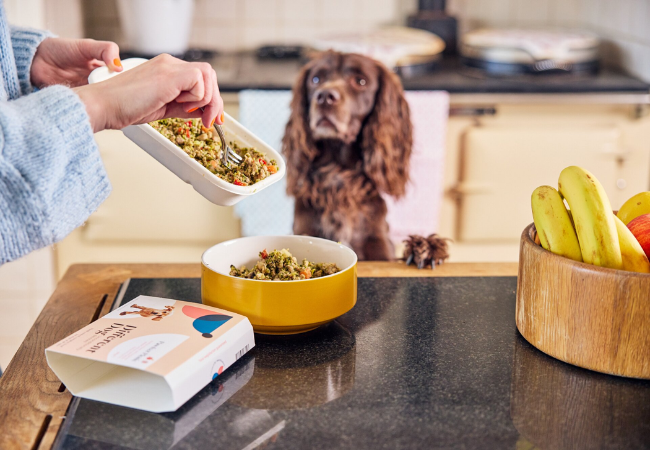Transition Your Dog to a Natural Diet 2025: Avoid Digestive Upset 🐶✨

In this article
Transition Your Dog to a Natural Diet 2025: Avoid Digestive Upset 🐶✨
By Dr. Duncan Houston BVSc
Switching your dog to a natural diet is one of the best decisions you can make—but it’s not something to do overnight. Whether you’re introducing raw, cooked, or fresh foods, slow and steady wins the race (and prevents diarrhea).
I’m Dr. Duncan Houston, veterinarian and founder of Ask A Vet. Here’s how to safely and successfully transition your dog to a healthier, natural diet with minimal risk of tummy trouble.
🚨 Why Transitioning Too Fast Causes Problems
- Your dog’s digestive enzymes and gut microbiome adapt to current food
- Sudden change disrupts bacteria and may cause gas, diarrhea, or vomiting
- Dogs need time to adjust to protein types, moisture levels, and fat content
📆 7-Day Transition Plan (General Guide)
Day 1–2: 75% old food + 25% new food
Day 3–4: 50% old food + 50% new food
Day 5–6: 25% old food + 75% new food
Day 7: 100% new food
For sensitive dogs, stretch the plan to 10–14 days. Some dogs need even longer if they’ve had a history of GI problems.
🥩 Transitioning to Different Natural Diets
Cooked Diet
- Start with bland proteins like chicken or turkey and gradually introduce organ meats and veggies
Raw Diet
- Start with a commercial raw food that is complete and balanced
- Choose a single protein (e.g., turkey) to begin and stick with it for 7–10 days
Co-Feeding Approach
- Replace just one meal per day with home-cooked or raw food
- This slower approach is easier on digestion and reduces stress
💩 How to Monitor Digestive Health During Transition
- Good signs: Firm, brown stools, consistent appetite, steady energy
- Red flags: Soft stool, diarrhea, vomiting, refusal to eat
- Track with a food journal or the Ask A Vet app to spot patterns
🦠 Use These to Support Digestion
- Probiotics: FortiFlora, Proviable, or plain kefir (dog-safe brands)
- Pumpkin: Plain canned pumpkin (not pie mix) to firm up stool
- Bone broth: Adds gut-healing amino acids and hydration
🚫 Transitioning Mistakes to Avoid
- Mixing too many new proteins or ingredients at once
- Switching diets while your dog is sick or stressed
- Forgetting to reduce treats, table scraps, or rich chews during transition
🔗 Tools from Ask A Vet
- Ask A Vet – Upload stool photos and food logs for vet-backed transition plans
📋 Summary Excerpt
Switching your dog to a natural diet is a great move—but only if done right. A vet explains how to transition to cooked, raw, or mixed feeding without upsetting your dog’s stomach.
❓ FAQs
-
Q: Can I mix old food and new food in the same bowl?
A: Yes. That’s the safest way to transition gradually over 7–10 days. -
Q: What if my dog has diarrhea after switching?
A: Slow down. Add bland foods like pumpkin or rice, and consult your vet if symptoms persist. -
Q: Should I fast my dog before switching diets?
A: No. Fasting is not necessary and can cause more stress or acid reflux. Always transition gradually.






